Introduction
Imagine a vast forest, home to countless species, suddenly engulfed in flames. The damage is not just to the environment but also affects nearby communities. We faced a clear challenge: how can we detect and manage forest fires more effectively to prevent such devastation? Enter FireWatch Pro, our smart system for detecting and managing forest fires using IoT and real-time data. Our goal was to create a system that not only detects fires early but also provides timely alerts to prevent widespread damage.
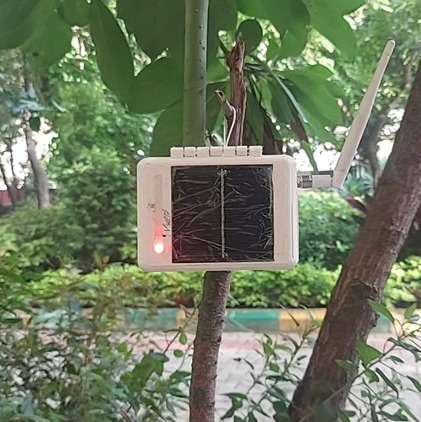 | 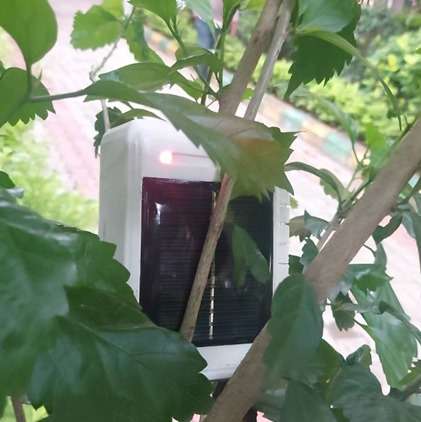 |
| NODE HUB | NODE |
End Result / Goal
FireWatch Pro excels in real-time forest fire detection and rapid alerting, enabling swift response and proactive management. It ensures the safety of ecosystems and communities by leveraging advanced technologies for early warning and efficient communication.
Step-by-Step Development
Identifying the Problem and Setting Goals
We started by pinpointing the core problem: the need for timely and accurate forest fire detection. Our goals were to:
- Develop a system that detects early signs of forest fires.
- Provide real-time alerts to authorities and communities.
- Ensure the system is scalable and reliable.
.png)
Selecting Hardware Components
We chose specific sensors known for their reliability and accuracy:
- KY-026 Flame Sensor for detecting flames.
- DHT11 Temperature and Humidity Sensor for monitoring environmental conditions.
- MQ7 Carbon Monoxide Sensor for detecting dangerous gas levels.
We selected the NodeMCU for the microcontroller due to its low power consumption and efficiency. For communication, we used:
- HC-12 Wireless Transceiver Module for data transmission between sensor nodes and the central hub.
- A9G GSM/GPRS + GPS Module for wireless communication and real-time tracking.
Setting Up the Power Supply
To ensure sustainability, we powered the device using solar panels, stabilized by a Power Stabilization Unit (PSU), keeping energy consumption below 1 watt.

Developing the Firmware
We programmed the microcontroller in C++, enabling it to:
- Read data from the sensors.
- Communicate data via the HC-12 module.
- Interface with the A9G module to transmit data to the cloud.
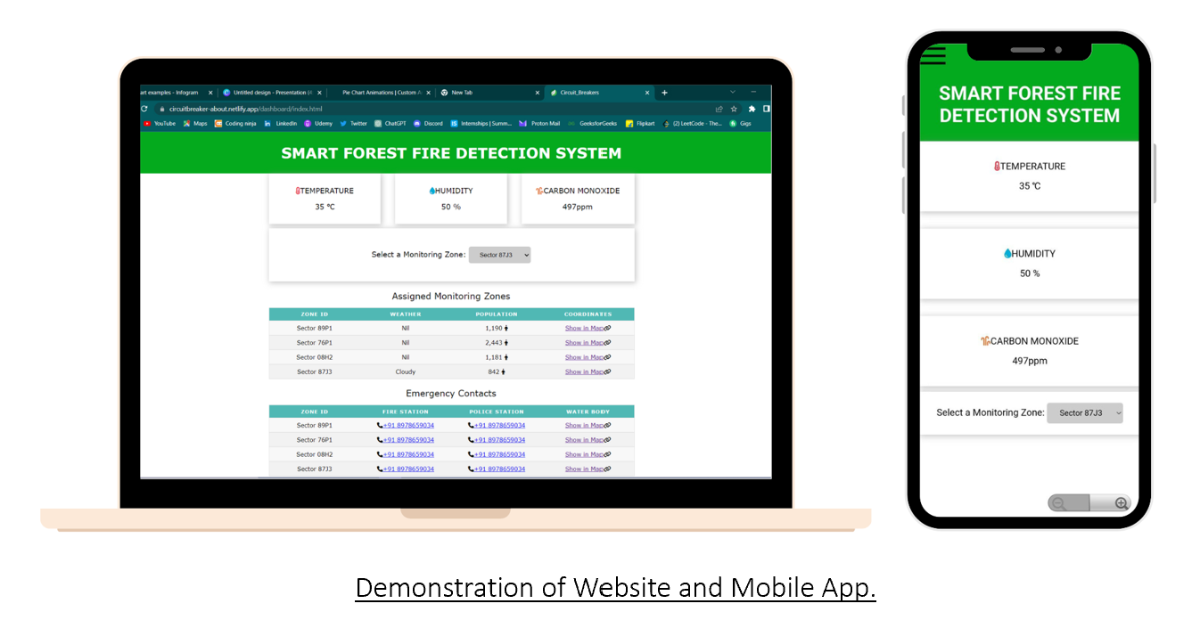
Building the Backend
We used Javascript for our Web Interface. Firebase was chosen for real-time data storage and synchronization, ensuring secure and scalable data management.
Ensuring Real-Time Communication
We integrated Telegram's messaging platform for real-time notifications, ensuring rapid alert delivery.
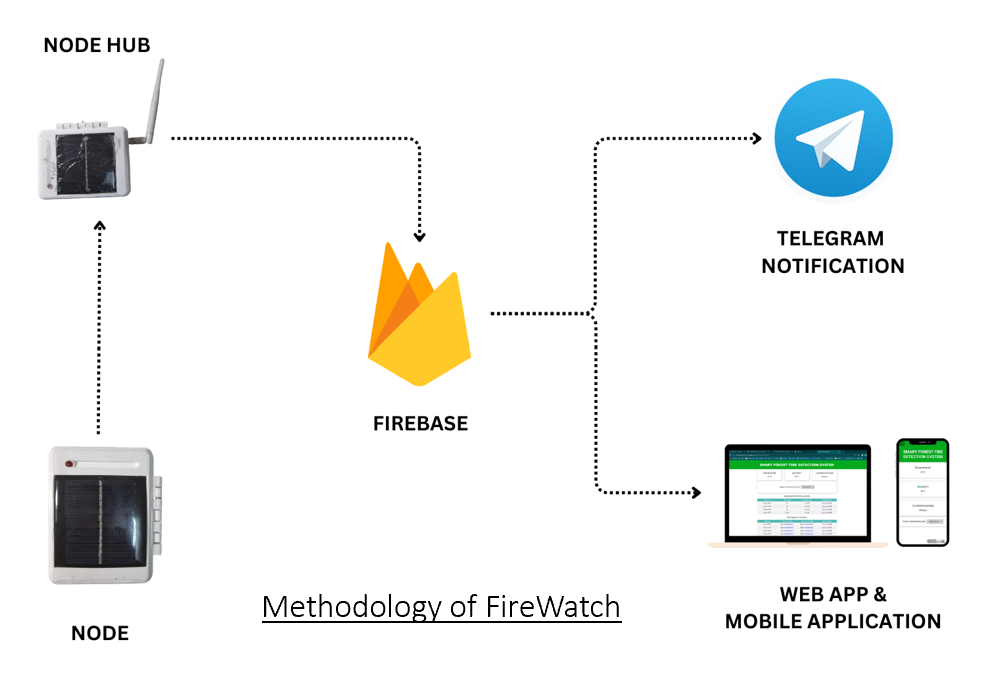
How It Works
The device employs multiple sensors to detect flames, temperature, humidity, and carbon monoxide levels. These sensors transmit real-time data wirelessly to the central hub via the HC-12 module. At the hub, the NodeMCU microcontroller processes the data, and the A9G GSM/GPRS + GPS module sends the coordinates of the detected fire to the cloud. Forest officials receive immediate fire alerts on their phones through Telegram and via a dedicated web page, enabling prompt and effective responses.
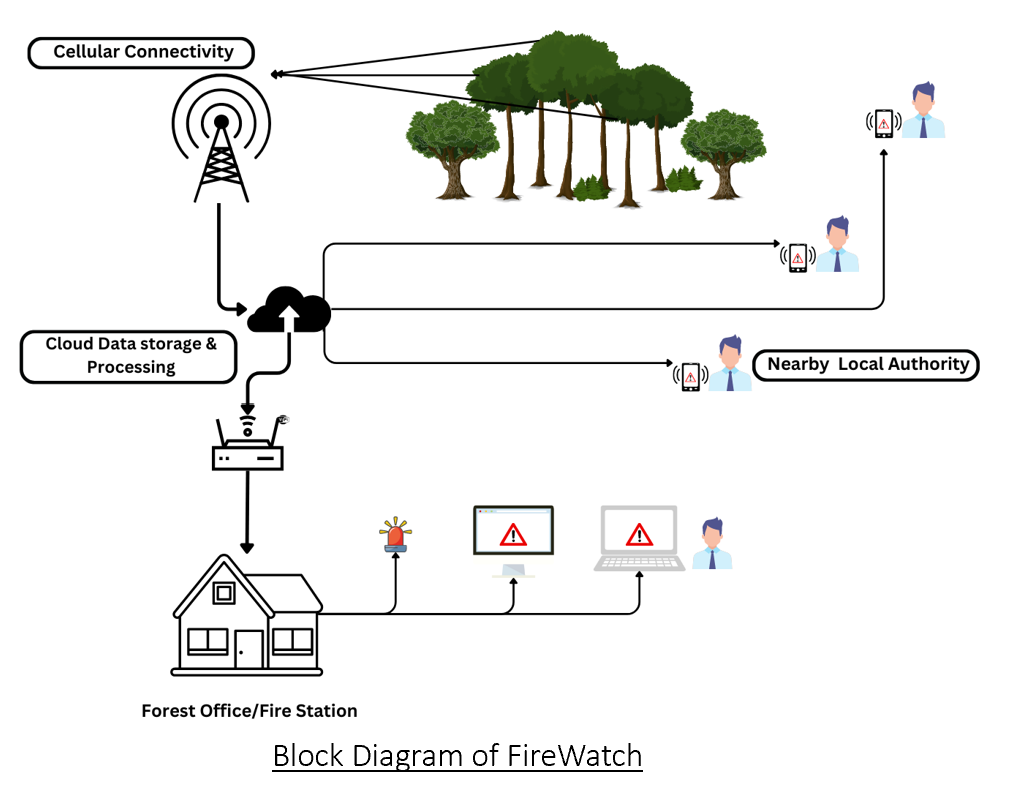
Schematics
- Node
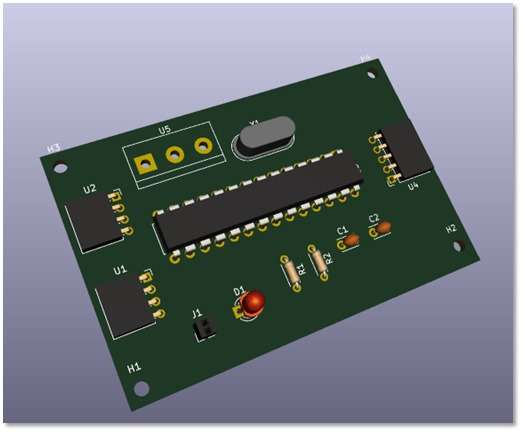 | 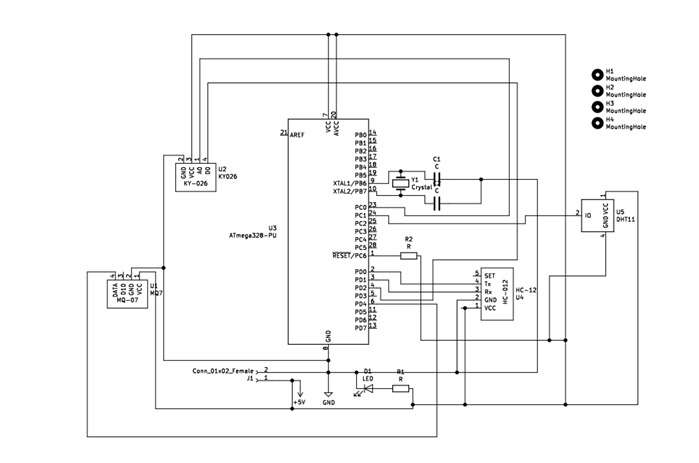 |
- PSU
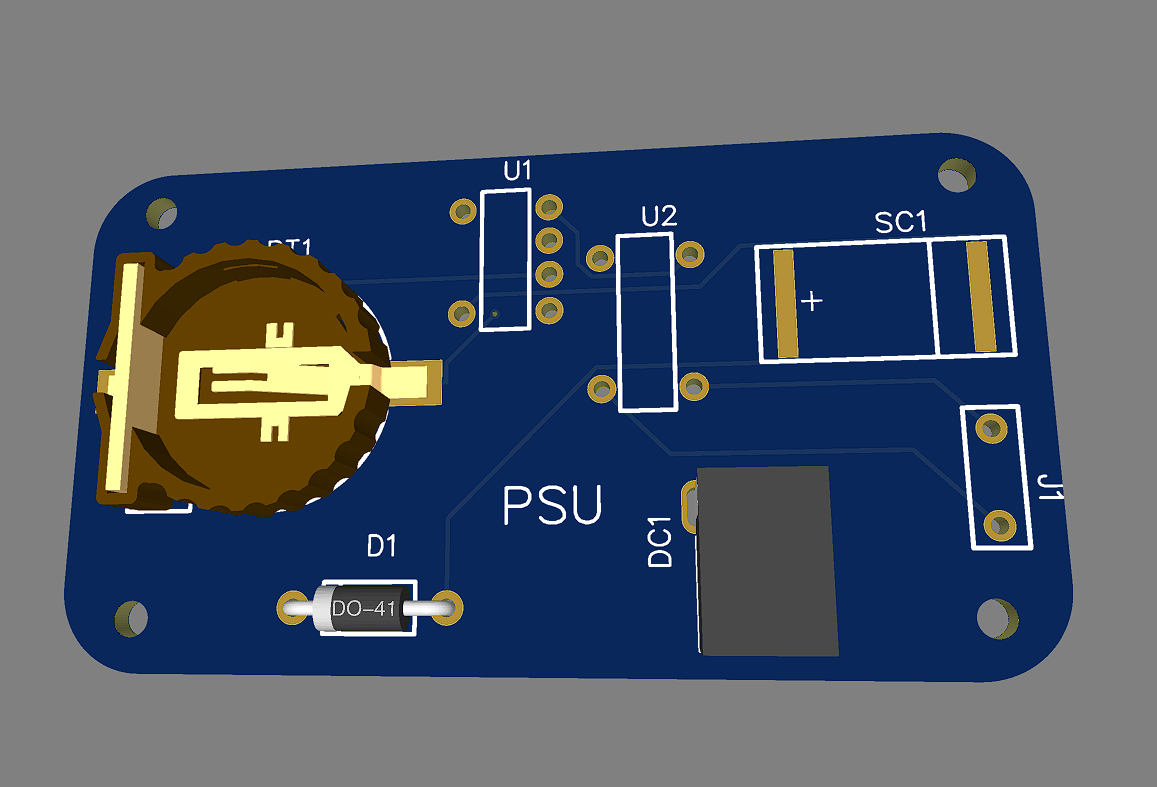 | 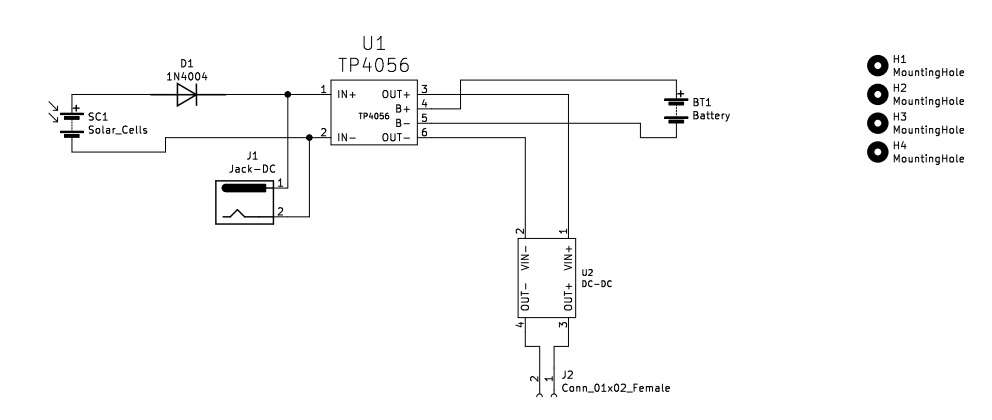 |
- Node Hub
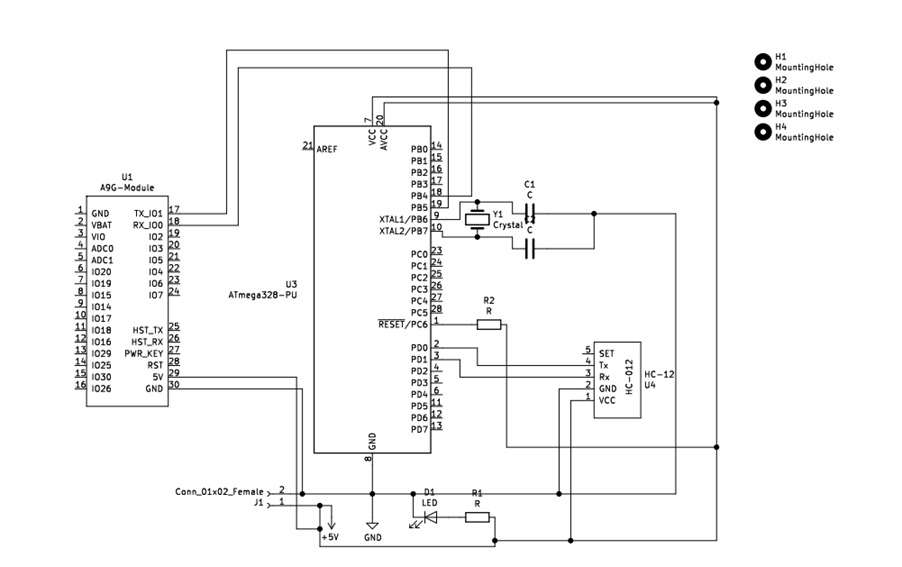
Conclusion
FireWatch Pro has proven to be a powerful tool in forest fire management, combining IoT and real-time data to protect our forests and communities. The project's success lies in its detailed planning, robust architecture, and continuous improvement based on user feedback, making it a reliable and scalable solution for forest fire detection and prevention.

